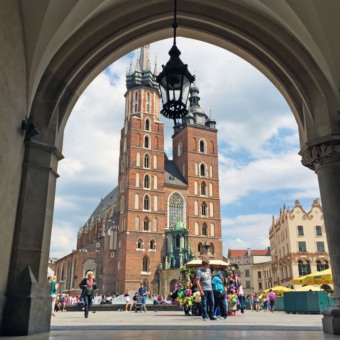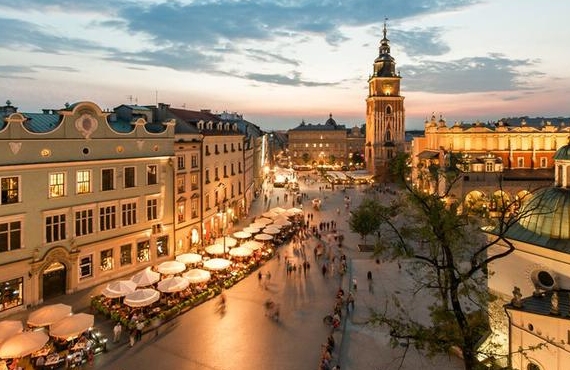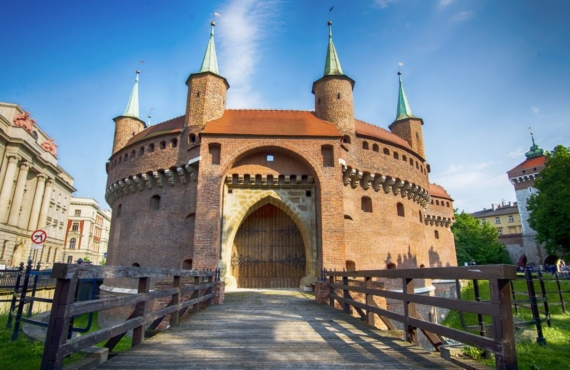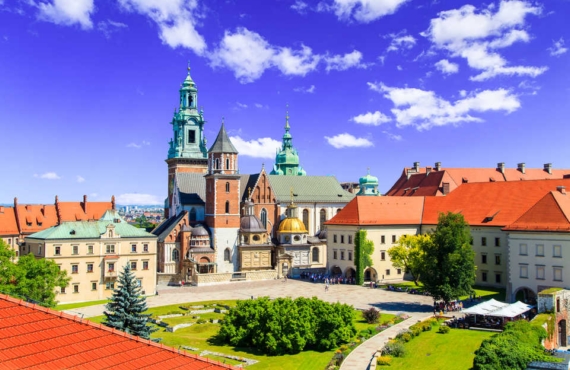Krakow, Poland
Krakow, Poland
Kraków / Cracow / Krakau / Cracovie / Cracovia / Kroke – is Poland’s second largest city and is deservedly called the most beautiful city of Poland. It is also one of the oldest cities of the country, as it dates back to seventh century, and a popular tourist destination. It used to be the capital of Poland and the residence of Polish kings. The city is divided into 18 districts, of which the most famous are the Old Town, Nowa Huta and Kazimierz. Architectural and urban complex of old Krakow is among the most important group of heritage sites in Poland and the world. The historical city centre has been placed on the UNESCO World Heritage List. The most significant architectural structures are the defence walls of the Wawel Castle, the Barbakan, Florian Gate, the Wawel Castle complex, with the Sigismund’s Chapel and its cathedral, St. Mary’s Basilica, with the altar by Wit Stwosz (Veit Stoss) and the renaissance Cloth Hall (Sukiennice). From the Middle Ages to the catastrophe of second world war Kraków – and especially Kazimierz – was counted among the greatest centres of Jewish activity in Europe. Attracting millions of tourists every year the district is home to the oldest Jewish sacred religious building in Poland which still stands along visitors route, the grave of a famous Rabbi which the Nazis did not dare tear down, a synagogue with stained-glass windows (a true rarity!), and the family home of the queen of cosmetics, Helena Rubinstein who hailed from Kazimierz. Worth visiting is also the old German Factory of Enameled Vessels, during the World War II owned by Oskar Schindler – a museum and memorial place reminding about the extermination’s times.
The cultural capital of Poland
Cracow is considered by many to be the cultural capital of Poland. It was named the European Capital of Culture by European Union for the year 2000. The city has several of the best museums in the country and a few famous theatres. When it comes to famous characters, two Polish Nobel laureates in literature lived in this city: Wisława Szymborska and Czesław Miłosz. Also, Cracow is a major centre of education. More than ten universities or academy level institutions are located in the city. The most famous and the best university in the country is the Jagiellonian University dating back to the year 1364.





Social programme
There are many ways to combine your professional training as a teacher and educator with exploring the magical city of Kraków and surroundings, its history, culture and hidden treasures.
At the European Teaches Academy we realize how important it is to build an effective team out of course participants. Therefore during your stay you can be sure we will be offering also a rich social programme, starting from exploring Krakow Old Town, thematic tours of the former Jewish district Kazimierz, the Riverside, the Wieliczka Salt Mine and other nearby attractions.
For those interested in exploring and understanding Poland’s uneasy history, there will be private tours organized to Auschwitz-Birkenau, Former German Nazi Concentration And Extermination Camp, to the Nowa Huta Socialist District, or Krakow 19th Century Fortifications.
There will be also many opportunities to taste our delicious cuisine during Krakow Evening Food Walking Tour to experience a culinary and cultural side of Poland that you will not get anywhere else!
Krakow gastronomy has a long and glorious tradition that dates back to the famously lavish medieval and Renaissance feasts and the Baroque extravaganzas of Polish gentry gourmets. And the city’s legendary restaurants of the past two centuries are fondly remembered. Yet recent decades have brought about a genuine restaurant explosion owing to the hectic efforts of aspiring restaurateurs, native as well as immigrants.
Krakow’s historical Old Town central district seems virtually stuffed with establishments catering to all kinds of diners. Here, within easy walking distance, one discovers hundreds of restaurants, cafes, bistros, grills, pizzerias, salad bars, etc. They are lodged in every available space of the area’s old palatial residences and stately burgher houses – upstairs, downstairs, and most willingly in those vast ancient cellars. No doubt, the exquisite and picturesque period interiors are a premium. And from springtime through autumn the restaurant tables take up the streets of the mostly pedestrian precinct.
A couple of blocks south another scenic downtown district, Kazimierz famed for its past Jewish quarter, also boasts numerous eateries. And still further to the south is the city’s newly established gastronomic frontier in historic Podgorze town across Wisla river.